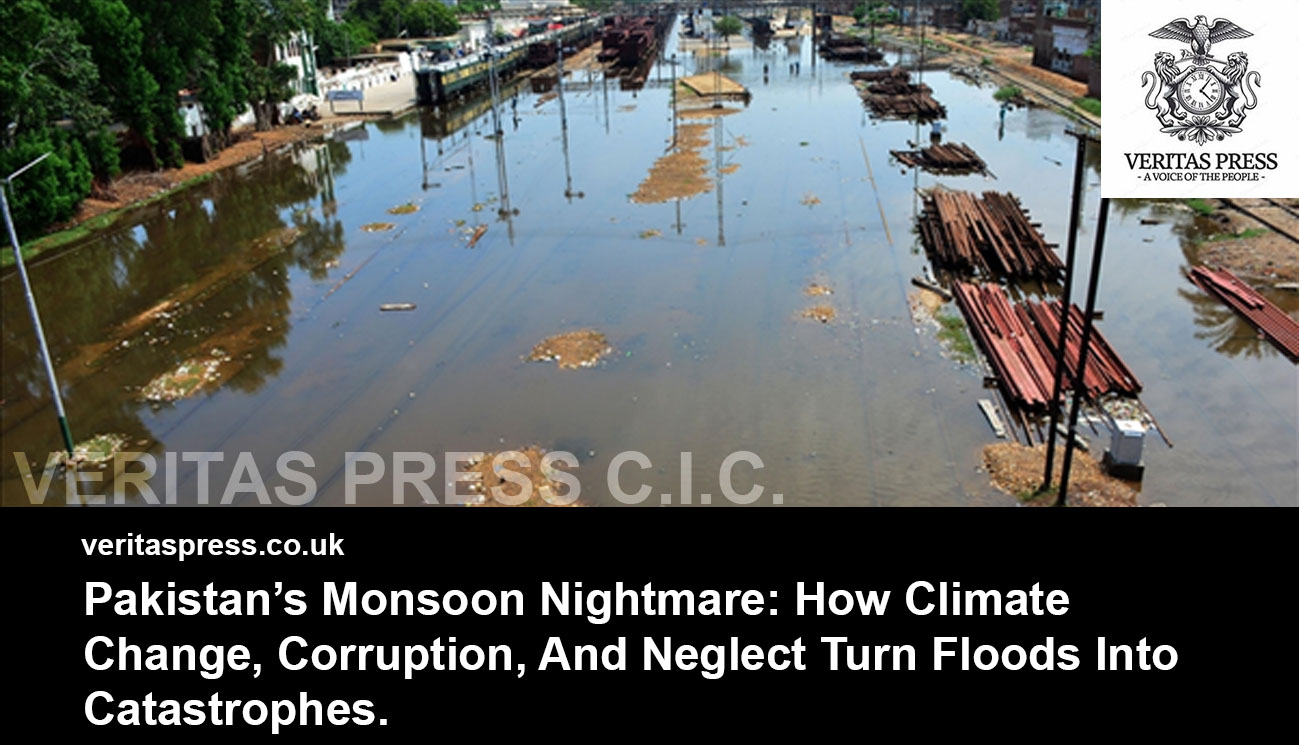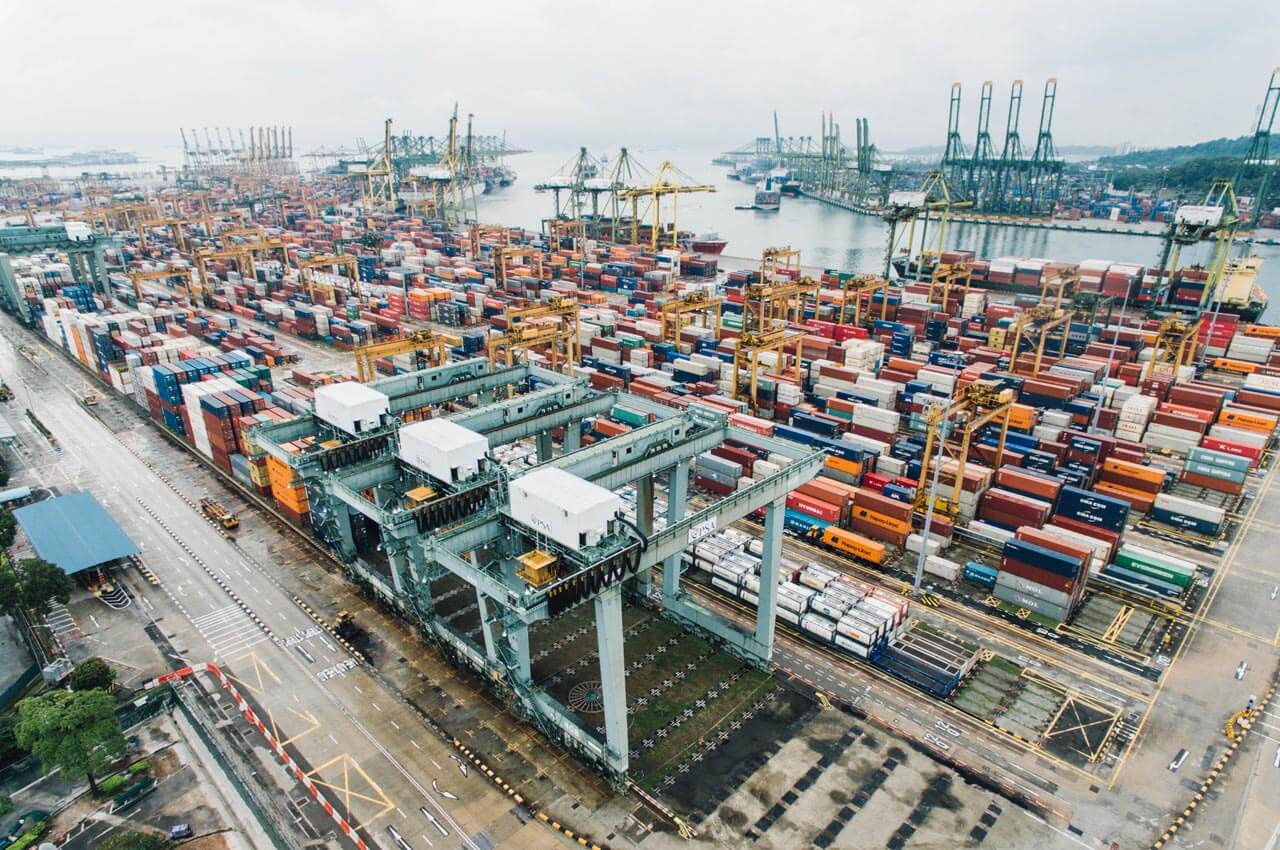Press Release: Veritas Press C.I.C. Author: Kamran Faqir Article Date Published: 26 Aug 2025 at 12:59 GMT Category: South Asia | Pakistan | Climate Change Source(s): Veritas Press C.I.C. | Multi News Agencies
The Day The Mountains Fell:
In Qadar Nagar, a remote village in Buner district, the wedding celebrations had barely begun when the skies ripped open.
“It started as a drizzle, then a roar,” recalls Sahil Khan, a farmer who lost his brother and two nephews. “Within minutes, the mountain turned into a river. Boulders rolled down like thunder. The house vanished.”
The flash flood, triggered by a sudden cloudburst, killed 18 people at the wedding, including the groom. Video footage circulating on social media shows frantic villagers digging through mud with bare hands, searching for bodies as rain continues to pound.
“We had no warning,” says Imtiaz Khan, another survivor. “If someone had told us, we would have run to higher ground. Instead, we buried our dead with our own hands.”
This was just one of several extreme rain events that struck northern Pakistan this month, killing at least 60 people across Khyber Pakhtunkhwa (KP) and Gilgit-Baltistan (GB), according to the National Disaster Management Authority (NDMA).
A Nation Drowning And Unprepared:
While flash floods and landslides battered the north, the south faced a different nightmare. In Punjab’s Sutlej basin, floodwaters displaced over 150,000 people after India released excess water from dams.
In Lahore, rescue boats ferried families through submerged streets. “We’ve been sleeping on rooftops for three nights,” says Zahida Bibi, a mother of four from Kasur district. “There is no food, no drinking water. The government comes only for photos.”
Officials blame India’s water releases, but experts say Pakistan’s flood defences were already weak. “These floods were predictable,” argues Dr. Ghulam Rasul, former chief meteorologist at the Pakistan Meteorological Department (PMD). “We had satellite data, but early warning dissemination failed. The system exists on paper, not in reality.”
The NDMA insists it issued alerts. Lt. Gen. Inam Haider Malik, NDMA chairman, defended his agency:
“We cannot stop the rain. Our responsibility is mitigation, and we issued timely warnings. Local authorities must implement evacuation plans.”
But in Kasur and Buner, locals tell a different story: no sirens, no SMS alerts, no evacuation orders, just rain and death.
Two Disasters, One Country:
Unlike the 2022 mega-floods, which inundated a third of Pakistan, this year’s twin flood crisis unfolded differently:
- Cloudbursts and glacial melt ravaged the north.
- Overflowing rivers and cross-border water flows hit Punjab and Sindh.
India’s Meteorological Department confirmed that Himachal Pradesh and Punjab received 220% above-normal rainfall, forcing emergency dam releases. But Pakistani officials accuse India of failing to share real-time dam data under the Indus Waters Treaty.
“This is not just a natural disaster, it’s a geopolitical failure,” says Rafay Alam, a Lahore-based environmental lawyer. “When you mix climate change with mistrust, the poor always drown first.”
When Climate Change Speaks:
Scientists warn that South Asia’s hydrology is being rewritten. A warmer atmosphere holds more moisture, leading to shorter, deadlier bursts of rain.
“Every 1°C rise means 7% more water in the air,” explains Dr. Adil Najam, a climate policy expert at Boston University. “Pakistan’s mountains are now ground zero for climate chaos, heatwaves, glacier melt, cloudbursts.”
This July, Chilas in GB hit 49°C, accelerating glacier melt and triggering glacial lake outburst floods (GLOFs). “More than 3,000 glacial lakes exist in northern Pakistan. Thirty-three are on the verge of bursting,” warns WWF-Pakistan in a recent report.
The Human Hand Behind Natural Disasters:
While climate change sets the stage, corruption, lack of preventive infrastructure and bad planning script the tragedy.
“Buner’s rivers were choked by illegal construction. Riverbeds were encroached by housing schemes,” says Farah Naz, an environmental activist. “You destroy nature’s drainage system, then act surprised when the water takes revenge.”
Prime Minister Shehbaz Sharif admitted systemic negligence after visiting flood-hit areas:
“We have criminally ignored disaster preparedness. It is a collective failure of governance.”
Yet experts say Pakistan’s disaster planning remains cosmetic. Building codes exist but go unenforced, and development funds vanish into political patronage networks.
Lessons Unlearned From 2022:
Three years ago, Pakistan suffered its worst climate disaster on record:
- 1,700 dead
- 33 million displaced
- $30 billion in losses
The world pledged billions for reconstruction at the Geneva Climate Conference, but delivery has lagged. “Less than 40% of the promised $9 billion materialised,” notes Imran Saqib Khalid of the Sustainable Development Policy Institute. “Adaptation remains a PowerPoint dream.”
The Money Mirage, Broken Climate Promises:
Pakistan contributes less than 1% of global emissions, yet ranks among the 10 most climate-vulnerable nations, according to Germanwatch.
“By 2030, Pakistan needs $150–300 billion for adaptation,” says Khalid. “Where will this money come from when our debt eats half our budget?”
Climate finance remains a diplomatic tug-of-war. The Loss and Damage Fund announced at COP28 has yet to release meaningful funds. “For the West, climate aid is charity. For us, it’s survival,” says Senator Sherry Rehman, Pakistan’s former climate minister.
Adapting Or Perishing:
Experts stress urgent steps:
- Flood-resilient infrastructure (raised homes, green belts)
- Mangrove restoration in Sindh
- Strict floodplain zoning
- Community-based warning systems
“If we don’t adapt now, Karachi will drown, and millions will migrate inland,” warns Ali Tauqeer Sheikh, a climate risk analyst. The World Bank projects 12–15 million internal climate refugees in Pakistan by 2050.
Back to Buner, Where Warnings Never Came:
In Qadar Nagar, Sahil Khan sits on a broken wall, staring at the rubble that once was his brother’s home. “They call it a disaster,” he says quietly. “But tell me, if we had warnings, if the rivers were clear, if the houses were safe, would we still be burying our children?”
The next monsoon is only 10 months away.
Conclusion: A Disaster By Design, Not Just By Nature.
Pakistan’s monsoon tragedy is often framed as an act of God. But the evidence tells a different story: this is a disaster engineered by decades of political neglect, institutional paralysis, and economic dependency. Climate change may have loaded the dice, but corruption and complacency rigged the game.
Warnings existed. Satellite data flashed red days in advance. Experts raised alarms about glacial melt and cloudbursts. India’s dam releases were predictable. Yet no sirens wailed, no shelters opened, no contingency plans activated. In the vacuum of governance, nature’s fury became a weapon of mass displacement.
Three years after the world vowed to “build back better” post-2022 floods, the pledges lie in diplomatic limbo while Pakistan rebuilds the same vulnerabilities, encroached riverbeds, unregulated urban sprawl, flimsy embankments financed by political patronage.
This failure is not just local, it is global. Pakistan contributes less than 1% of global emissions yet pays the highest price. Wealthy nations, responsible for centuries of carbon loading, have yet to deliver meaningful funds from the Loss and Damage mechanism promised at COP summits. Climate reparations cannot remain charity with strings attached; they must be legally binding obligations, disbursed transparently to protect lives, not line pockets.
At home, Pakistan must end the cycle of disaster capitalism:
- Ban construction on floodplains.
- Enforce building codes and relocate high-risk communities before the next storm, not after.
- Strengthen provincial disaster agencies and establish independent oversight to monitor adaptation funds.
- Create climate-resilient infrastructure based on science, not short-term politics.
The next monsoon is not a question of if, but when. Until Pakistan treats survival as a constitutional right and the global North treats climate finance as a debt, not a donation, every raincloud over the Himalayas will carry not just water, but the weight of broken promises, unlearned lessons, and injustice that spans continents.
If the world fails to act, these floods will not just drown villages, they will wash away the last illusions of climate justice.
Tags:




























Leave a Reply